This article was co-authored by Katie Marks-Cogan, MD. Dr. Katie Marks-Cogan is a board certified Pediatric & Adult Allergist at Clear Allergy based in Los Angeles, California. She is the Chief Allergist for Ready, Set, Food!, an infant dietary supplement designed to reduce the risk of childhood food allergies. She received her M.D. with honors from the University of Maryland. She then completed her residency in Internal Medicine at Northwestern University and fellowship in Allergy/Immunology at the University of Pennsylvania and CHOP.
There are 24 references cited in this article, which can be found at the bottom of the page.
This article has been viewed 288,933 times.
Allergies range from mild seasonal ones to severe ones that cause life-threatening reactions. People can have allergic reactions to a number of things, including various foods, drugs, and allergy shots. Milk, eggs, wheat, soy, peanuts, tree nuts, fish, and shellfish are principal food types which commonly cause allergies. Whether you have a mild or severe allergy, you should know the proper response to a reaction, to minimize your discomfort and perhaps save a life.
Steps
Treating A Mild Allergic Reaction
-
1Be aware of allergy symptoms. It is likely that you'll first discover your allergy by having an unexpected allergic reaction. It may be difficult to recognize these symptoms if you've never had a reaction before, but learning the signs to look out for will help you take the right steps that could save your life. The following symptoms are considered mild and don't require emergency medical attention. Mild symptoms, however, can progress into a more serious reaction, so monitor your condition for at least an hour after these symptoms show.[1] [2]
- Sneezing and mild coughing
- Watery, itchy, and red eyes
- A runny nose
- Itching or redness on the skin; often this will progress into hives. Hives are red, itchy swollen areas on the skin - they can vary in size from small bumps to large welts measuring several inches (centimeters) in diameter.
-
2Take an OTC antihistamine. For mild reactions with symptoms that don't progress, an antihistamine is typically the only treatment you'll need. There are a variety for you to choose from, and it would be wise to keep several in your home at all times in the event of allergies. Always take these medications as labels indicate.[3]
- Benadryl.[4] This is most often recommended for reactions involving hives because it works fast. It can be taken with or without food and you should drink a full glass of water with each dose. Do not exceed 300mg within a 24-hour period or you risk overdose. Note that Benadryl usually causes drowsiness, so use caution if driving or operating machinery. If you experience drowsiness, stop these activities.[5]
- Claritin. This is typically used to treat seasonal allergies and hay fever, though it can be effective against hives. It can be taken with or without food. It usually does not cause drowsiness, but it is still a possible side effect, so monitor your condition before driving or operating machinery. Typically Claritin should only be taken once a day.[6]
- Zyrtec. Typical dosage is 5-10mg per day, with or without food. A potential side effect is confusion or impaired alertness, so use caution if driving while on Zyrtec.[7]
- Allegra. This usually has to be taken on an empty stomach, at least 1 hour before or 2 hours after a meal. You should also only drink water when taking Allegra, as fruit juices can interact with the drug. Like other antihistamines, it can cause drowsiness.[8]
- There are also prescription-strength versions of these medications.
- Talk with your doctor about which medication would be best for you. Some people have allergies or sensitivities to certain ingredients, so you'll want to make sure the medication is safe for you to take.
Advertisement -
3Treat hives and dermal itching with an OTC hydrocortisone cream. Hydrocortisone helps reduce the swelling and itching associated with hives. There are a number of brand and generic creams containing hydrocortisone that are easily available at drug stores. Check all medication labels to ensure that any anti-itch cream you are looking at contains hydrocortisone.[9] [10]
- There are also prescription-strength varieties of hydrocortisone cream. If an OTC cream doesn't soothe your symptoms, ask your doctor about getting a prescription for a stronger dose.
- You can also apply a cold towel to hives if you don't have access to hydrocortisone cream.
-
4Monitor your symptoms for a few hours after your reaction starts. Allergic reactions can start anywhere from 5 minutes to an hour after you came in contact with the allergen. Mild symptoms could possibly progress into a more serious reaction. If at any point you experience shortness of breath, itching in your mouth and throat, or trouble breathing, call Emergency Services immediately. If swelling obstructs your airway, you could asphyxiate within minutes.[11]
-
5Follow up with an allergist. When your allergic reaction passes, schedule an appointment with an allergist. The allergist will test you to find out what triggered your allergic reaction. They can also prescribe medication to help you manage your symptoms.[12]
Treating A Severe Allergic Reaction
-
1Be aware of the risk of anaphylaxis. Allergies can be so severe that they are life threatening because of their effect on breathing and blood circulation. The condition is called anaphylaxis and is considered by the Red Cross to be a "treat first, then call" emergency, due to the potential speed and severity of the reaction.[13]
- If you have multiple helpers at the scene, have someone else call emergency services while you treat for possible anaphylaxis, as described below. If not, and you see signs of a serious symptoms (see below), don't delay treatment.[14]
-
2Look out for serious symptoms. Depending on your allergy, your reaction may start with mild symptoms and gradually grow more serious, or symptoms start almost immediately. If you experience any of the following symptoms, you are having anaphylaxis that requires immediate treatment.[15]
- Serious symptoms include swelling of the lips, tongue, or throat, shortness of breath, wheezing, coughing, drop in blood pressure, weak pulse, trouble swallowing, chest pains, nausea and vomiting, dizziness, and loss of consciousness.
-
3Use an EpiPen if you have one. EpiPen is a device that injects epinephrine and is used to treat anaphylaxis.[16]
- Take the EpiPen and hold it in the middle tightly with the orange tip pointing down.
- Remove the safety cap on top, which is usually blue.
- Place the orange tip against your outer thigh. You don't have to remove your pants, the needle will pierce your clothes.
- Firmly press the orange tip against your leg. This will release a needle that injects the dose of epinephrine.
- Hold the injector in place for 10 seconds to ensure that the full dose enters your body.
- Remove the EpiPen and keep it with you so medical staff will know how large of a dose you received.
- Massage the injection site for 10 seconds to circulate the medication.
- If your EpiPen is expired, you can still use it. The potency may be reduced significantly.
-
4Call Emergency Services. Call your local emergency number immediately and be sure to tell the operator that you are having an allergic reaction. Don't risk driving yourself to the emergency room- the paramedics will have epinephrine on hand to stop the reaction.[17]
- After you administer the epinephrine, you still need to seek medical help. The epinephrine will wear off after 10 to 20 minutes, and the allergic reaction can start again. Either go to the emergency room or call 911 to get further medical assistance.
-
5Follow up with an allergist. After receiving medical help and your allergic reaction passes, schedule an appointment with an allergist. They will test you to find out what triggered your allergic reaction and can prescribe medication, an EpiPen, or allergy shots to help manage your symptoms.
Visiting the Allergist
-
1Find an allergist in your area. You can ask your primary care doctor for a referral. If you live in the United States, search online or talk to your primary care doctor to find an allergist. Many of the diagnostic tests used to diagnose allergies cannot be performed at your regular doctor’s office, so you’ll need to see a specialist.[18]
-
2Make a log of everything you were doing when you experienced your allergic reaction. Sometimes the cause of your reaction will be obvious. If, for example, you ate a peanut and 10 minutes later your experienced anaphylaxis, there is a pretty clear culprit. If, however, you just went for a walk outside and experienced an allergic reaction, there are a multitude of allergens you may have encountered that triggered your attack. To help your allergist, write down everything you remember about the events leading to your reaction- what did you eat? Touch? Where were you? Did you take any medicine? These questions will all help your allergist determine the cause of your allergy.[19]
-
3Have a skin test. After talking with you and getting your history, the allergist will probably perform a skin test to determine what is causing your allergy. During a skin test, a drop of several potential allergens is placed on the skin, sometimes with a slight prick of the skin. After about 20 minutes, if you are allergic to a substance, a red, itchy bump will appear. This signifies to the allergist that this substance is causing your allergy, and he will treat you accordingly.[20]
-
4Take a blood test if necessary. Sometimes the allergist will also order an allergy blood test. This may be because you are on medication that could corrupt a skin test, you have a skin condition, or the allergist may just want confirmation of the allergy with another test. Blood tests are usually done in a lab and take several days to produce results.[21]
-
5Get an EpiPen prescription. Even if your reaction was not severe, you should ask your allergist for a prescription for an EpiPen. Your symptoms may be worse the next time you have an attack, and having an EpiPen around could easily save your life.
Managing Your Allergy
-
1Avoid your triggers. After your visit to the allergist, you will probably be aware of what substance or substances cause allergic reactions. With this knowledge, you should do all you can to avoid your allergen. Sometimes this is simple, like if you are allergic to a certain food. Other times, like if your family pet is causing allergies, this isn't so easy. Since in theory anything can cause an allergy, there is no one rule on how to avoid triggers. But there are a few prominent allergy types that have standard avoidance procedures.[22]
-
2Use caution when preparing food. If you are allergic to a specific food, check all food labels to ensure that your allergen isn't in a food you're buying. Sometimes common ingredients aren't listed on labels, so talk with your allergist or even a dietician if you are at all unsure of something. Always inform staff at a restaurant of your allergy to avoid cross-contamination.[23]
-
3Cut down on dust in your home. If you are allergic to dust, remove carpeting, especially where you sleep. Clean your house regularly with a vacuum, and wear a dust mask while doing so. Use mite-proof sheets and pillow covers and wash all of your bedding regularly with hot water.[24]
-
4Control the movements of family pets. If you have an animal allergy, you don't have to get rid of your family pets. You will, however, have to restrict their movements. Keep animals out of your sleeping area and any rooms you spend a lot of time in. It would also help to remove carpeting to avoid dander buildup. Also bathe your animals once a week to remove as much excess hair as possible.[25]
-
5Avoid insect bites when spending time outside. If you have an insect allergy, don't walk in grass barefoot and wear long sleeves and pants when working outside. Also cover any food that is outside to avoid attracting insects.[26]
-
6Inform all medical staff if you have a drug allergy. Make sure every doctor you visit is aware of your allergy. Ask about alternatives for medications you are allergic to. Also be sure to wear an emergency medical bracelet to let any emergency medical staff know that you are allergic to certain drugs.[27]
-
7Keep your EpiPen with you. You should take your EpiPen with you every time you go somewhere your allergen could be present. Having it handy could save your life if you experience a reaction away from home.
-
8Take your medication as directed. Your allergist may recommend one or more medications to treat your allergy symptoms. These can range from OTC antihistamines to prescription corticosteroids. Whatever medications your allergist recommends, be sure to take them on schedule as he prescribes. This will help control your allergy symptoms and lessen your chances of a severe reaction.[28]
-
9Get allergy shots. Some allergens can be treated with allergy shots, or immunotherapy. The process entails gradually desensitizing your body to the allergen by injecting small doses of it. Usually shots are given every week for a few months, and then gradually scaled back. Shots are typically given for allergens like dust, pollen, and insect venom. Ask your allergist if this is an option for you.[29]
Expert Q&A
-
QuestionAre there any dangerous allergic reactions?
 Katie Marks-Cogan, MDDr. Katie Marks-Cogan is a board certified Pediatric & Adult Allergist at Clear Allergy based in Los Angeles, California. She is the Chief Allergist for Ready, Set, Food!, an infant dietary supplement designed to reduce the risk of childhood food allergies. She received her M.D. with honors from the University of Maryland. She then completed her residency in Internal Medicine at Northwestern University and fellowship in Allergy/Immunology at the University of Pennsylvania and CHOP.
Katie Marks-Cogan, MDDr. Katie Marks-Cogan is a board certified Pediatric & Adult Allergist at Clear Allergy based in Los Angeles, California. She is the Chief Allergist for Ready, Set, Food!, an infant dietary supplement designed to reduce the risk of childhood food allergies. She received her M.D. with honors from the University of Maryland. She then completed her residency in Internal Medicine at Northwestern University and fellowship in Allergy/Immunology at the University of Pennsylvania and CHOP.
Board Certified Pediatric & Adult Allergist Absolutely. Anaphylaxis is a serious allergic reaction that can cause shortness of breath and trouble breathing. This particular response requires epinephrine. Other severe symptoms include swelling of the skin, vomiting, diarrhea, and hives that cover the entire body. Get immediate medical attention if you experience a severe reaction.
Absolutely. Anaphylaxis is a serious allergic reaction that can cause shortness of breath and trouble breathing. This particular response requires epinephrine. Other severe symptoms include swelling of the skin, vomiting, diarrhea, and hives that cover the entire body. Get immediate medical attention if you experience a severe reaction. -
QuestionHow can a doctor tell if you have allergies?
 Katie Marks-Cogan, MDDr. Katie Marks-Cogan is a board certified Pediatric & Adult Allergist at Clear Allergy based in Los Angeles, California. She is the Chief Allergist for Ready, Set, Food!, an infant dietary supplement designed to reduce the risk of childhood food allergies. She received her M.D. with honors from the University of Maryland. She then completed her residency in Internal Medicine at Northwestern University and fellowship in Allergy/Immunology at the University of Pennsylvania and CHOP.
Katie Marks-Cogan, MDDr. Katie Marks-Cogan is a board certified Pediatric & Adult Allergist at Clear Allergy based in Los Angeles, California. She is the Chief Allergist for Ready, Set, Food!, an infant dietary supplement designed to reduce the risk of childhood food allergies. She received her M.D. with honors from the University of Maryland. She then completed her residency in Internal Medicine at Northwestern University and fellowship in Allergy/Immunology at the University of Pennsylvania and CHOP.
Board Certified Pediatric & Adult Allergist There are diagnostic tests for allergies, but you have to see a specialist to get them. Your regular doctor can refer you to an allergist.
There are diagnostic tests for allergies, but you have to see a specialist to get them. Your regular doctor can refer you to an allergist. -
QuestionWhat is an EpiPen used for?
 Katie Marks-Cogan, MDDr. Katie Marks-Cogan is a board certified Pediatric & Adult Allergist at Clear Allergy based in Los Angeles, California. She is the Chief Allergist for Ready, Set, Food!, an infant dietary supplement designed to reduce the risk of childhood food allergies. She received her M.D. with honors from the University of Maryland. She then completed her residency in Internal Medicine at Northwestern University and fellowship in Allergy/Immunology at the University of Pennsylvania and CHOP.
Katie Marks-Cogan, MDDr. Katie Marks-Cogan is a board certified Pediatric & Adult Allergist at Clear Allergy based in Los Angeles, California. She is the Chief Allergist for Ready, Set, Food!, an infant dietary supplement designed to reduce the risk of childhood food allergies. She received her M.D. with honors from the University of Maryland. She then completed her residency in Internal Medicine at Northwestern University and fellowship in Allergy/Immunology at the University of Pennsylvania and CHOP.
Board Certified Pediatric & Adult Allergist You use an EpiPen to administer epinephrine to treat anaphylaxis. Your doctor can prescribe an EpiPen if you need one.
You use an EpiPen to administer epinephrine to treat anaphylaxis. Your doctor can prescribe an EpiPen if you need one.
Warnings
- Always consult your doctor before trying new medications or remedies.⧼thumbs_response⧽
References
- ↑ http://www.webmd.com/first-aid/allergic-reaction-treatment
- ↑ http://www.foodallergy.org/symptoms
- ↑ https://www.nhs.uk/conditions/allergies/treatment/
- ↑ https://www.webmd.com/skin-problems-and-treatments/hives-treatment#1
- ↑ http://www.nlm.nih.gov/medlineplus/druginfo/meds/a682539.html
- ↑ http://www.nlm.nih.gov/medlineplus/druginfo/meds/a697038.html
- ↑ http://www.nlm.nih.gov/medlineplus/druginfo/meds/a698026.html
- ↑ http://www.nlm.nih.gov/medlineplus/druginfo/meds/a697035.html
- ↑ http://www.webmd.com/first-aid/allergic-reaction-treatment
- ↑ http://www.nlm.nih.gov/medlineplus/druginfo/meds/a682793.html
- ↑ http://www.webmd.com/first-aid/allergic-reaction-treatment
- ↑ Katie Marks-Cogan, MD. Board Certified Pediatric & Adult Allergist. Expert Interview. 9 December 2019.
- ↑ https://www.mayoclinic.org/diseases-conditions/anaphylaxis/symptoms-causes/syc-20351468
- ↑ https://www.anaphylaxis101.com/en/about-anaphylaxis/epinephrine
- ↑ http://www.foodallergy.org/symptoms
- ↑ Katie Marks-Cogan, MD. Board Certified Pediatric & Adult Allergist. Expert Interview. 9 December 2019.
- ↑ http://acaai.org/allergies/anaphylaxis
- ↑ Katie Marks-Cogan, MD. Board Certified Pediatric & Adult Allergist. Expert Interview. 9 December 2019.
- ↑ http://acaai.org/allergies/treatment/when-to-see-allergist
- ↑ http://acaai.org/allergies/treatment/allergy-testing/skin-test
- ↑ http://acaai.org/allergies/treatment/allergy-testing
- ↑ https://www.mayoclinic.org/diseases-conditions/allergies/symptoms-causes/syc-20351497
- ↑ http://acaai.org/allergies/types/food-allergies
- ↑ http://acaai.org/allergies/types/dust-allergy
- ↑ http://acaai.org/allergies/types/pet-allergy
- ↑ http://acaai.org/allergies/types/insect-sting-allergies
- ↑ http://acaai.org/allergies/types/drug-allergies
- ↑ http://acaai.org/allergies/treatment/medication
- ↑ http://acaai.org/allergies/treatment/allergy-shots-immunotherapy
About This Article
If you or someone else is experiencing a severe allergic reaction with symptoms like swollen lips, tongue or throat and shortness of breath and wheezing, you need to treat them immediately with an EpiPen. A severe allergic reaction is considered a “treat first, then call” emergency, so have someone call emergency services as the EpiPen is being administered or right after. To use the EpiPen, remove the blue safety cap and place the orange tip on your outer thigh. Press the orange tip against your leg to release a needle that will pierce through your clothes and inject a dose of epinephrine for 10 seconds. Finally, massage the injection site briefly to circulate the medication. For more help from our Medical co-author, including how to treat mild allergic reactions, scroll down.
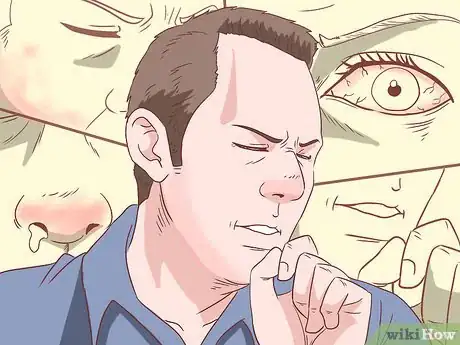
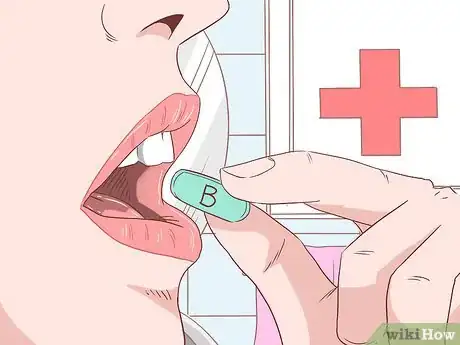
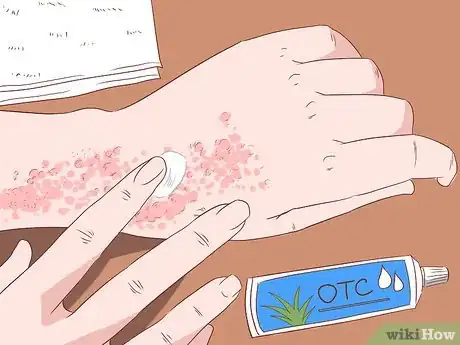
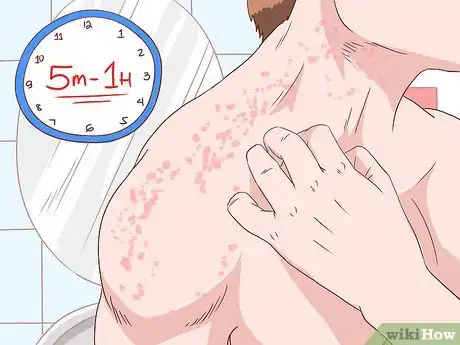
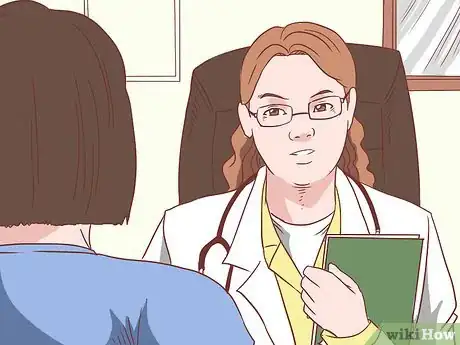


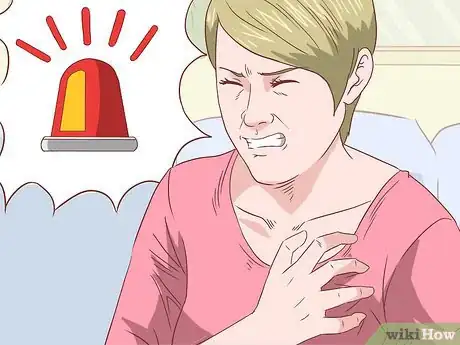
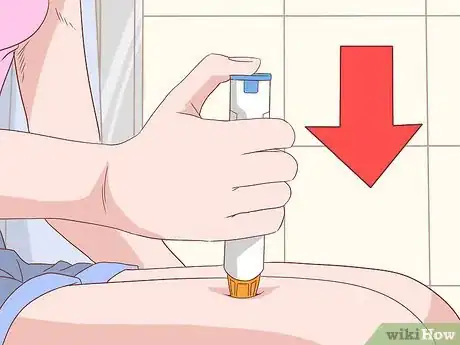




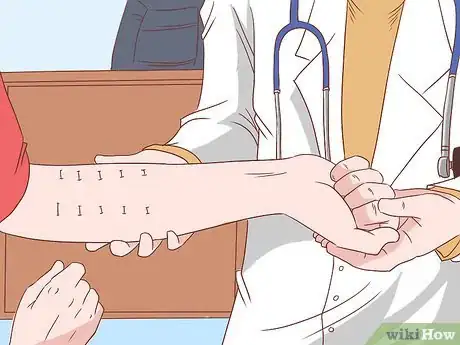
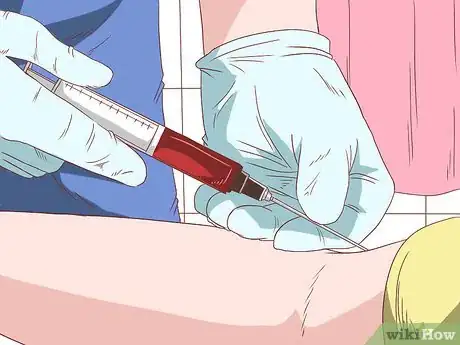
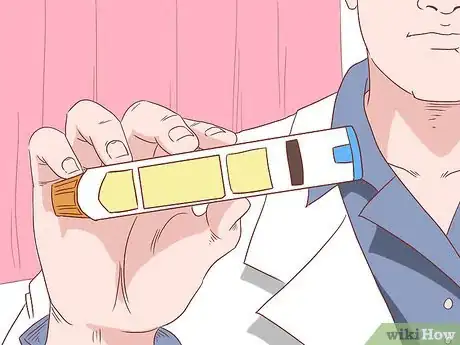
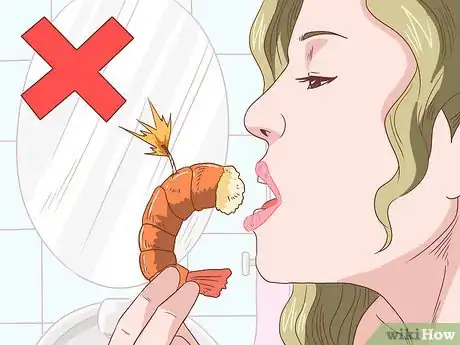
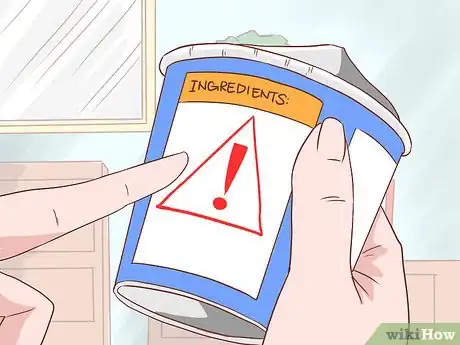

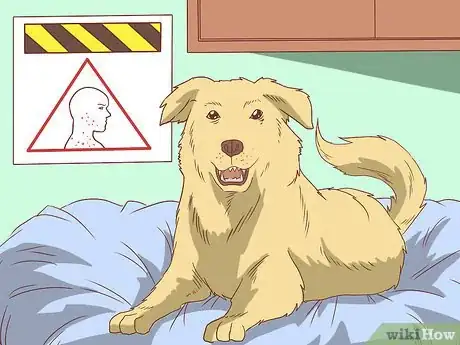
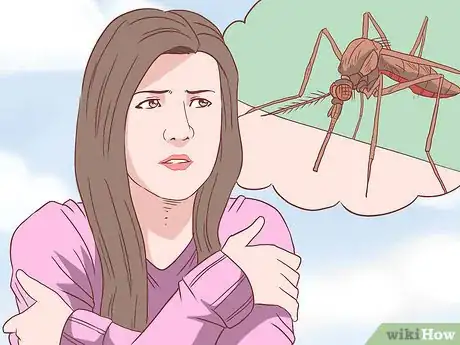
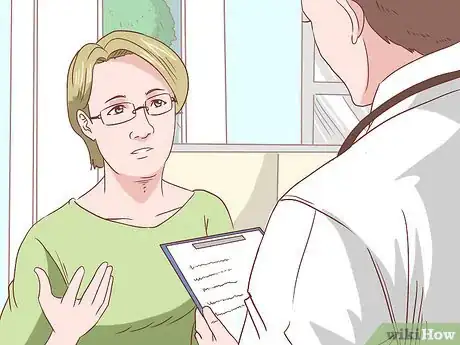

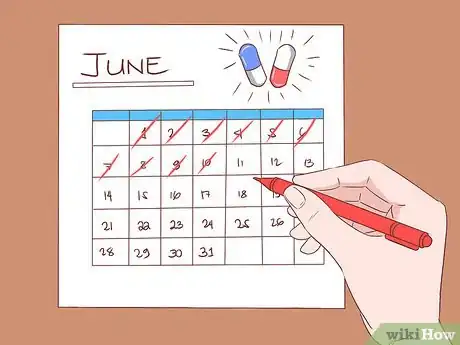

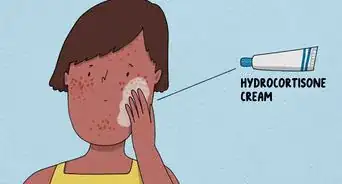

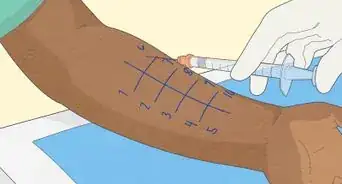
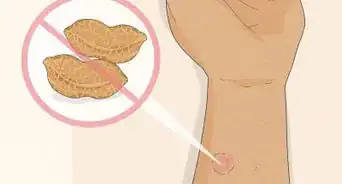


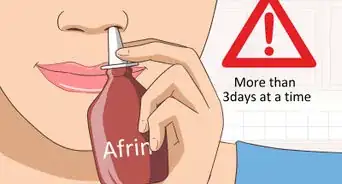

-Step-17-Version-3.webp)













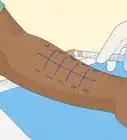
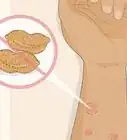



































Medical Disclaimer
The content of this article is not intended to be a substitute for professional medical advice, examination, diagnosis, or treatment. You should always contact your doctor or other qualified healthcare professional before starting, changing, or stopping any kind of health treatment.
Read More...